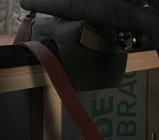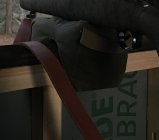I have just discovered the theory of Mean Radius and have conducted 10 shot, 200 yard testing on handloads for a remington 742 woodsmaster in .30-06 that I inherited.
My first load was 49 grains of IMR-4350 with hornady brass, speer 150 gr. spitzers and cci primers. This load had an extreme spread of 9 inches, and a mean radius of 4 at 200 yards. R95 of 4*1.3=5.2. This gives a 95% confidence of landing your shots in a 10.4 inch circle. This seemed too big for deer hunting so I moved on to the next load.
My second load was 48 grains of IMR-4895 with federal brass, speer 150 gr. spitzers and cci primers. This load had an extreme spread of 7 inches, and a mean radius of 2.48 at 200 yards. This is a tried and true M1 Garand powder and bullet weight. The 95% confidence level or R95 = 2.48*1.3=3.224. This means that a high percentage of shots will land in a 6.5 inch circle at 200 yards. I don't hunt anywhere that would offer a 200 yard shot I think I will use this load.
Testing was conducted on windless days, from a lead sled, with 3 minutes between each shot.
I think this method is generally thought of as relevant only to accurate, long range rifles, however, it seems that it is just as relevant for the short range, less accurate deer hunting rifle. You get some very useful data from this method that 3 shot groups can't provide
My first load was 49 grains of IMR-4350 with hornady brass, speer 150 gr. spitzers and cci primers. This load had an extreme spread of 9 inches, and a mean radius of 4 at 200 yards. R95 of 4*1.3=5.2. This gives a 95% confidence of landing your shots in a 10.4 inch circle. This seemed too big for deer hunting so I moved on to the next load.
My second load was 48 grains of IMR-4895 with federal brass, speer 150 gr. spitzers and cci primers. This load had an extreme spread of 7 inches, and a mean radius of 2.48 at 200 yards. This is a tried and true M1 Garand powder and bullet weight. The 95% confidence level or R95 = 2.48*1.3=3.224. This means that a high percentage of shots will land in a 6.5 inch circle at 200 yards. I don't hunt anywhere that would offer a 200 yard shot I think I will use this load.
Testing was conducted on windless days, from a lead sled, with 3 minutes between each shot.
I think this method is generally thought of as relevant only to accurate, long range rifles, however, it seems that it is just as relevant for the short range, less accurate deer hunting rifle. You get some very useful data from this method that 3 shot groups can't provide
- scope adjustment based on 10 shot group center (the more the better when the rifle is inaccurate)
- an actual way to evaluate accuracy based on intended target size
- some sort of actual confidence level that the large 10 shot group you are staring at can be directed to the intended target
- in this case an accurate handload in an inaccurate rifle for only 20 shots. Especially important in a rifle where every shot brings it closer self destruction!
- With a chronograph (I don't have one) you have all the information you need to get your zero angle in 4DOF.














